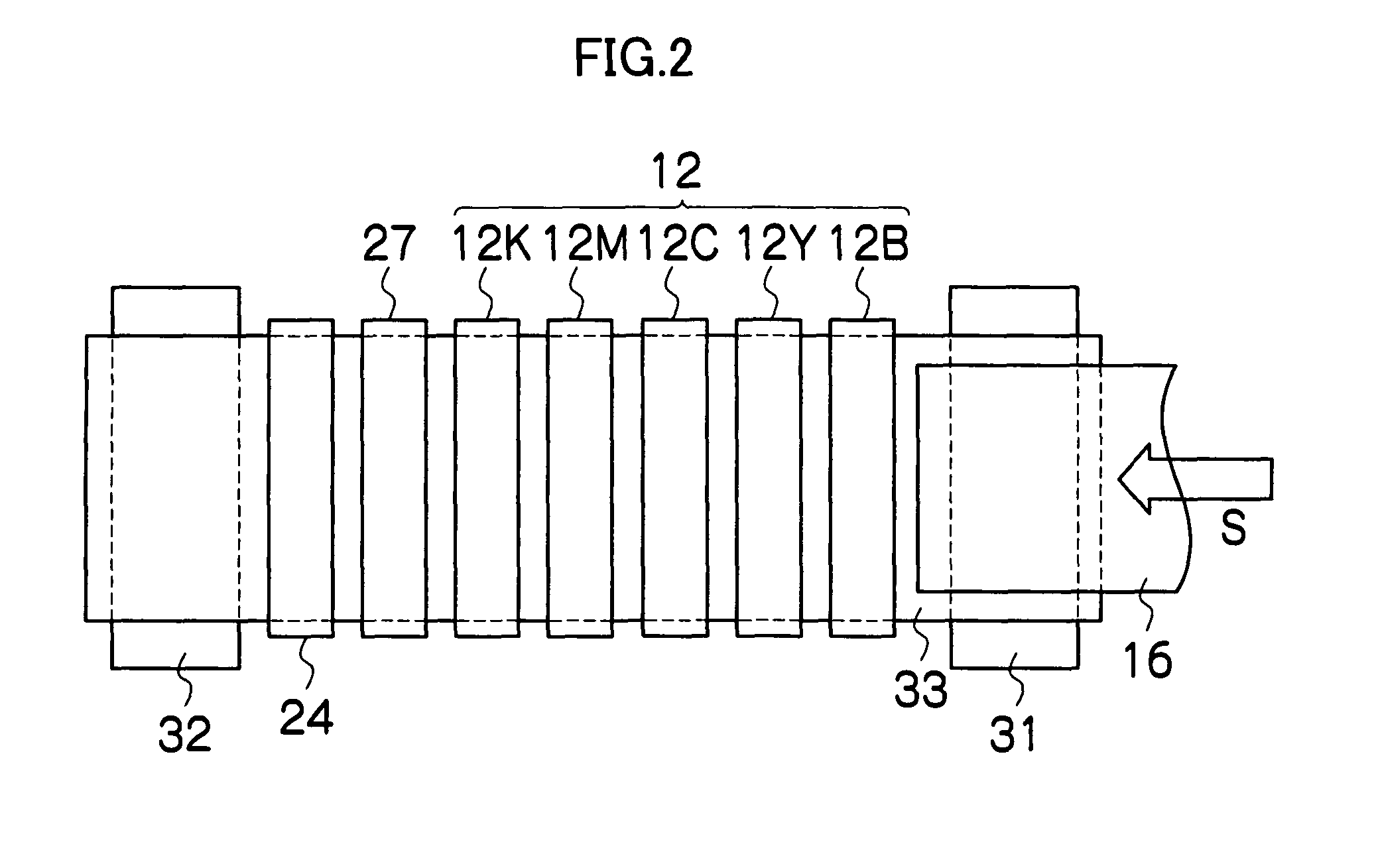Inkjet recording apparatus
a recording apparatus and inkjet technology, applied in the direction of printing, duplicating/marking methods, inks, etc., can solve the problems of difficult to avoid depositing interference and image quality degradation, and achieve the effects of preventing depositing interference, suppressing image disturbance, and preventing image quality degradation
- Summary
- Abstract
- Description
- Claims
- Application Information
AI Technical Summary
Benefits of technology
Problems solved by technology
Method used
Image
Examples
example 1
Practical Example 1
[0165]Experiments were carried out under conditions shown in FIG. 8, in order to determine the appropriate acceleration voltage for the electron beam in a case where two liquids, namely, liquid A (ink) and liquid B (treatment liquid), are deposited onto a recording medium and an electron beam is used as curing radiation.
[0166]In FIG. 8, comparative examples under conditions 1 to 9, 13 and 14 are listed. In conditions 1 and 2, ultraviolet (UV) light was used as a curing radiation. In conditions 3 to 8, treatment liquid was not deposited on the recording medium and only ink was deposited. In conditions 9, 13 and 14, two liquids, namely, treatment liquid and ink, were deposited and an electron beam (EB) was used as a curing radiation, but the acceleration voltage of the electron beam was out of the preferable range (40 kV to 60 kV).
[0167]In contrast to these comparative examples (conditions 1 to 9, 13 and 14), conditions 10 to 12 are practical examples of the present...
example 2
Practical Example 2
[0190]Experiments were carried out under conditions shown in FIG. 9, in order to determine the appropriate relationship between the surface tension of the ink and the surface tension of the treatment liquid, in the case where two liquids, namely, liquid A (ink) and liquid B (treatment liquid), were deposited on the recording medium and the electron beam was used as curing radiation.
[0191]In FIG. 9, conditions 1, 4 and 5 relate to comparative examples, and conditions 2, 3 and 6 relate to practical examples of the present invention.
[0192]In practical example 2, liquids A1 and A2 were prepared as the ink, and liquids B2, B3 and B4 were prepared as the treatment liquid. The compositions of the liquids A1, A2, B2, B3, and B4 are as follows.
[0193]Liquid A1: (surface tension 34.4 mN / m)[0194]bifunctional monomer (HDDA): 92 wt %,[0195]hexafunctional monomer (DPCA60): 5 wt %,[0196]pigment: 3 wt %
[0197]Liquid A2: (surface tension 31.2 mN / m)[0198]bifunctional monomer (HDDA): ...
PUM
| Property | Measurement | Unit |
|---|---|---|
| acceleration voltage | aaaaa | aaaaa |
| acceleration voltage | aaaaa | aaaaa |
| acceleration voltage | aaaaa | aaaaa |
Abstract
Description
Claims
Application Information
 Login to View More
Login to View More - R&D
- Intellectual Property
- Life Sciences
- Materials
- Tech Scout
- Unparalleled Data Quality
- Higher Quality Content
- 60% Fewer Hallucinations
Browse by: Latest US Patents, China's latest patents, Technical Efficacy Thesaurus, Application Domain, Technology Topic, Popular Technical Reports.
© 2025 PatSnap. All rights reserved.Legal|Privacy policy|Modern Slavery Act Transparency Statement|Sitemap|About US| Contact US: help@patsnap.com



